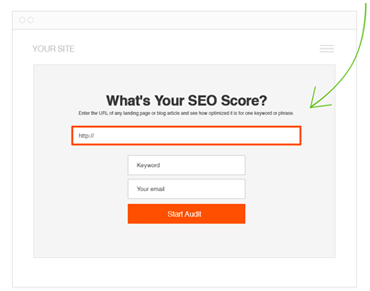Keyword Research in SEO: A Comprehensive Guide
Search engine optimization (SEO) drives organic website traffic in digital marketing. At the core of an effective SEO strategy lies keyword research, a practice that enables businesses to understand their target audience’s online behavior and optimize their content accordingly. By harnessing the power of keywords, websites can secure higher rankings in search engine results pages (SERPs) and attract qualified traffic. In this comprehensive guide, we will delve into the intricacies of keyword research and equip you with the tools and techniques needed to conquer the SEO landscape.
Understanding the Importance of Keyword Research
Effective keyword research is the key to unlocking online success in today’s competitive digital landscape. By identifying the right keywords, businesses can gain valuable insights into user intent, anticipate search trends, and align their content with the needs and expectations of their target audience. A well-executed keyword research strategy provides enhanced visibility, increased organic traffic, and improved conversions.
Laying the Foundation: Identify Your Goals and Target Audience
Before embarking on your keyword research journey, it is crucial to define your goals and identify your target audience. Clearly outline what you wish to achieve through your SEO efforts and understand your ideal customer’s demographics, interests, and preferences. This foundational step will provide a solid framework to guide your keyword research process effectively.
Brainstorming and Generating Seed Keywords:
To initiate the keyword research process, brainstorm and generate seed keywords. These seed keywords are general terms or phrases relevant to your business or industry. Put yourself in the shoes of your target audience and think about the words they might use to search for products, services, or information related to your business. Leverage your expertise, industry knowledge, and customer insights to create a list of seed keywords.
Expand Your Keyword List
Once you have your seed keywords, it’s time to expand your keyword list using various tools and techniques. Here are a few approaches to consider:
a. Keyword Research Tools: Utilize popular keyword research tools such as Google Keyword Planner, SEMrush, Ahrefs, or Moz Keyword Explorer. These tools provide valuable data on search volume, competition, and related keywords, helping you uncover high-potential keywords for your SEO strategy.
b. Competitor Analysis: Analyze your competitors’ websites and identify their target keywords. This can provide valuable insights into gaps and opportunities within your industry. Tools like SEMrush and SpyFu can assist you in uncovering your competitors’ top-performing keywords.
c. Long-Tail Keywords: Don’t overlook the power of long-tail keywords, which are longer, more specific phrases that tend to have lower search volume but higher conversion potential. Long-tail keywords allow you to target a niche audience and capture highly relevant traffic.
d. Customer Feedback and FAQs: Respond to customer feedback, inquiries, and frequently asked questions. These can serve as a goldmine of keywords that directly address your audience’s pain points and interests.
Analyzing Keyword Metrics
Once you have a comprehensive list of keywords, it’s time to analyze their metrics to determine their potential value. Key metrics to consider include search volume, competition level, and relevance to your business. Strike a balance between high-volume keywords that may be more competitive and low-volume keywords that offer a greater chance of ranking higher. Tools like Google Keyword Planner and other SEO platforms can provide invaluable insights into these metrics.
Refining Your Keyword List
To streamline your keyword research efforts, refining and prioritizing your keyword list is essential. Consider the following factors:
a. Relevance: Ensure the keywords align with your business, products, or services.
b. Search Volume: Prioritize keywords with a healthy search volume to maximize reach.
c. Competition: Evaluate the competition level for each keyword to identify opportunities for ranking.
d. User Intent: Understand the intent behind each keyword. Are users seeking information, looking to make a purchase, or comparing options?
Content Optimization and Implementation
With a refined keyword list, it’s time to optimize your content accordingly. Incorporate your target keywords strategically into various on-page elements, including titles, headings, meta descriptions, and body text. Ensure the keyword usage appears natural and aligns with the overall user experience. Focus on creating high-quality, informative, engaging content that resonates with your audience while seamlessly incorporating your chosen keywords.
Conclusion
Keyword research is a fundamental pillar of a successful SEO strategy. By mastering the art of keyword research, businesses can unlock the potential to drive targeted organic traffic and achieve their online goals. Stay vigilant, adapt to evolving search trends, and continually leverage the tools and resources to refine your keyword research process. By understanding your audience, discovering valuable keywords, and optimizing your content accordingly, you can position your website for sustained success in the dynamic world of SEO.
References:
- Stone, C. (2022). The Importance of Keyword Research for SEO: A Beginner’s Guide. Forbes. Link
- Sharma, A. (2021). 8 Effective Keyword Research Tools for SEO. Forbes. Link
- Schmidt, M. (2021). How to Do Keyword Research for SEO: A Step-by-Step Guide. Forbes. Link
 May 16, 2023
May 16, 2023


